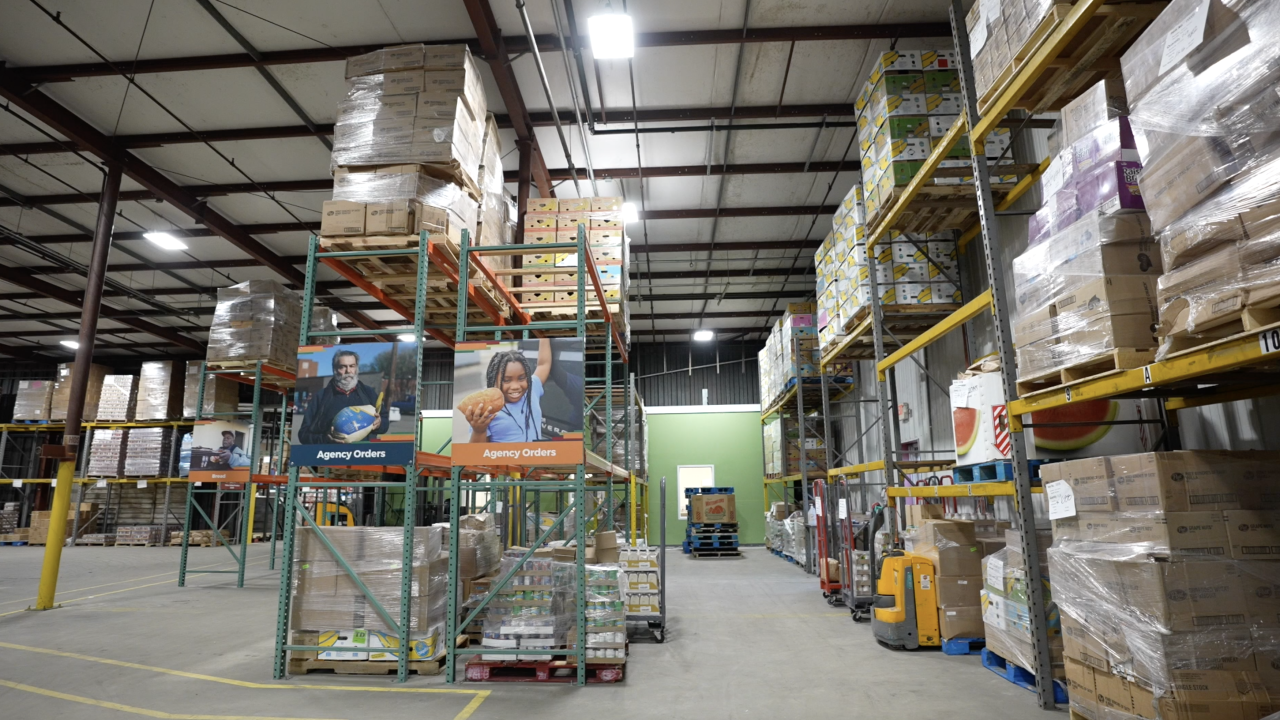CHARLESTON, S.C. — Food banks across the country are already dealing with increased demand from families in need throughout the pandemic. Now, they are also facing surging food prices and supply chain issues.
Nick Osborne, president and CEO of Lowcountry Food Bank, says it's been a struggle to keep the operation running smoothly.
“We are serving from what was around about 32 million pounds of food over the last two years, that’s increased to 40 million pounds of food. So we’ve now moved up to having to be able to provide close to about 3 million pounds of food every month consistently," said Osborne. “So that’s put huge pressure on our operating systems and our ability to be able to deliver that.”
Osborne says they can’t let the problems keep them from providing for their South Carolina communities.
“That has meant that we’ve had to purchase more because it doesn’t mean we then stop providing food to communities that need it. So we have to purchase more food to fill that gap. Bear in mind that we’re also purchasing that food at a higher cost as well. We are also now competing for the same food that retail stores are also competing for as well," Osborne said. “Canned vegetables, for example, we’re seeing a 50 to 60% increase in the cost of canned vegetables. We’re seeing an increase in transport costs. We are purchasing, for example, produce from the southeast, which means we have to transport that produce from one state to another. In the past, that would have cost us about $850 a load. That now costs us probably close to about $2,400 a load.”
Not too far from their facilities, East Cooper Community Outreach (ECCO) is feeling the same effects. Just like the Lowcountry Food Bank, Kathleen Forbes, director of Programs and Services at ECCO, says they had no choice but to spend more money.
“So looking back from 2018-2019, we’re about $800,000 in retail value of food that we distributed in comparison to 2021," she said. "We are almost at $1.3 million of the retail value that was distributed."
“Normally, before the pandemic, we were helping about 425 to 450 families every single month with a full month's food order. When the pandemic hit, our numbers from 425 shot up to sometimes over 950 households coming to ECCO for help," said Don Squires, the Director of Development and Marketing.
"Over the past year, we’ve had to increase our overall budget by a million dollars," Forbes said.
“People that used to donate meat to us, it’s just not there anymore. There are no extras to donate to local food banks and so we have been finding ourselves spending thousands of dollars each month on meat, on hygiene products to be able to supply to our clients," Squires said.
These food banks know these issues are far from over and many say it will take restructuring their processes to continue to be what the community needs.
"It’s not just a process of food in, food out, it’s a really intricate system. And that system works in concert, it has to work as a very well-oiled machine," Osborne said.



